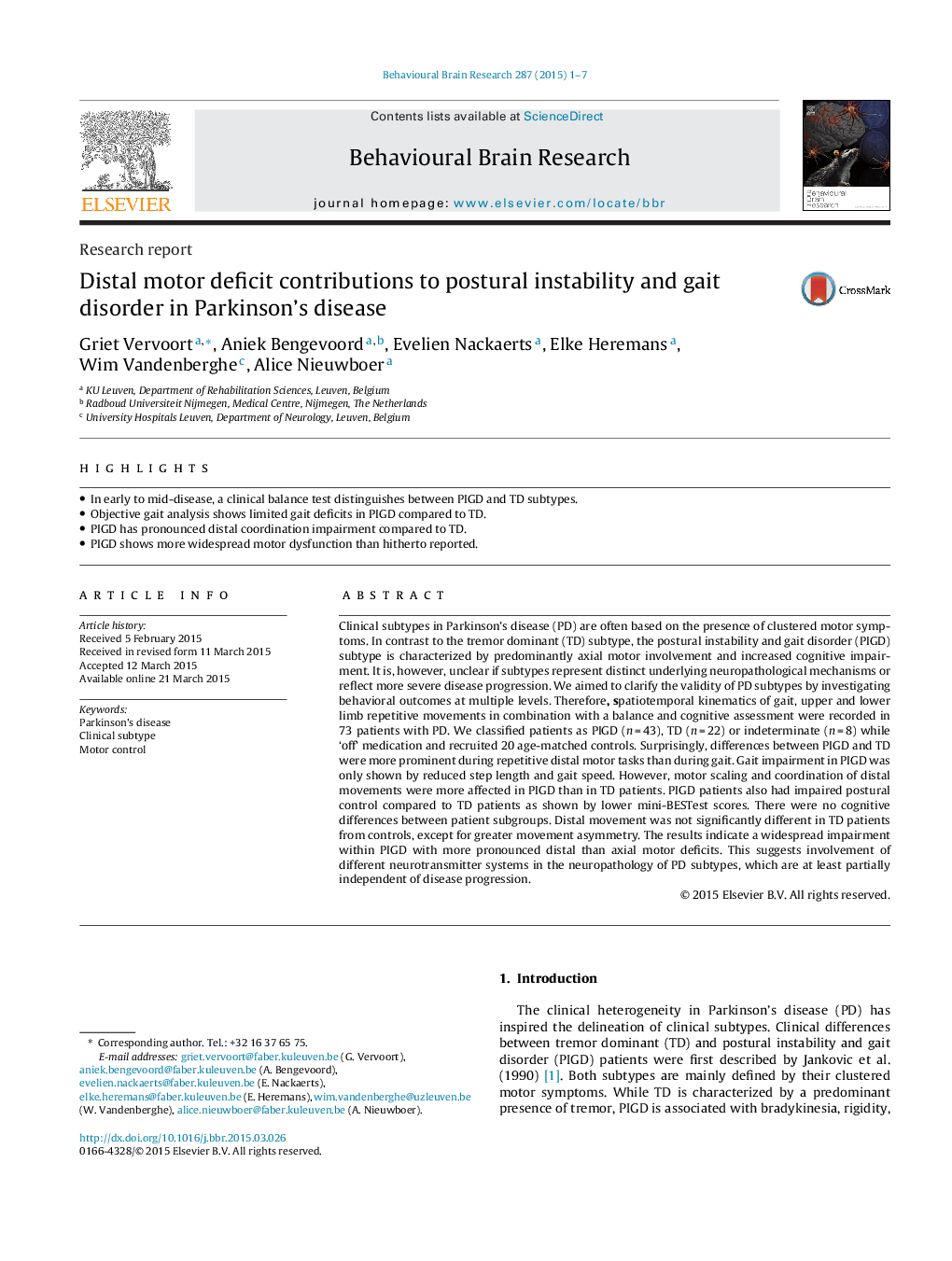| Article ID | Journal | Published Year | Pages | File Type |
|---|---|---|---|---|
| 6256862 | Behavioural Brain Research | 2015 | 7 Pages |
â¢In early to mid-disease, a clinical balance test distinguishes between PIGD and TD subtypes.â¢Objective gait analysis shows limited gait deficits in PIGD compared to TD.â¢PIGD has pronounced distal coordination impairment compared to TD.â¢PIGD shows more widespread motor dysfunction than hitherto reported.
Clinical subtypes in Parkinson's disease (PD) are often based on the presence of clustered motor symptoms. In contrast to the tremor dominant (TD) subtype, the postural instability and gait disorder (PIGD) subtype is characterized by predominantly axial motor involvement and increased cognitive impairment. It is, however, unclear if subtypes represent distinct underlying neuropathological mechanisms or reflect more severe disease progression. We aimed to clarify the validity of PD subtypes by investigating behavioral outcomes at multiple levels. Therefore, spatiotemporal kinematics of gait, upper and lower limb repetitive movements in combination with a balance and cognitive assessment were recorded in 73 patients with PD. We classified patients as PIGD (n = 43), TD (n = 22) or indeterminate (n = 8) while 'off' medication and recruited 20 age-matched controls. Surprisingly, differences between PIGD and TD were more prominent during repetitive distal motor tasks than during gait. Gait impairment in PIGD was only shown by reduced step length and gait speed. However, motor scaling and coordination of distal movements were more affected in PIGD than in TD patients. PIGD patients also had impaired postural control compared to TD patients as shown by lower mini-BESTest scores. There were no cognitive differences between patient subgroups. Distal movement was not significantly different in TD patients from controls, except for greater movement asymmetry. The results indicate a widespread impairment within PIGD with more pronounced distal than axial motor deficits. This suggests involvement of different neurotransmitter systems in the neuropathology of PD subtypes, which are at least partially independent of disease progression.
